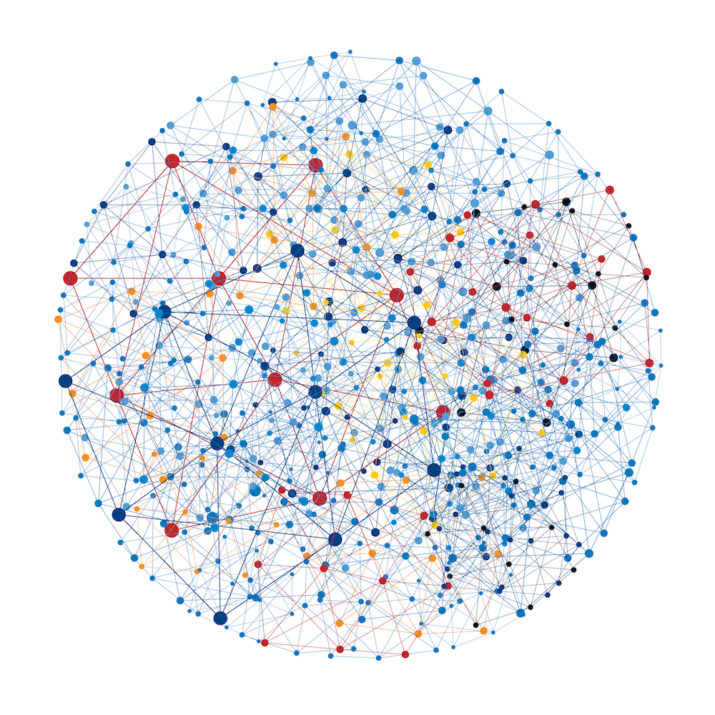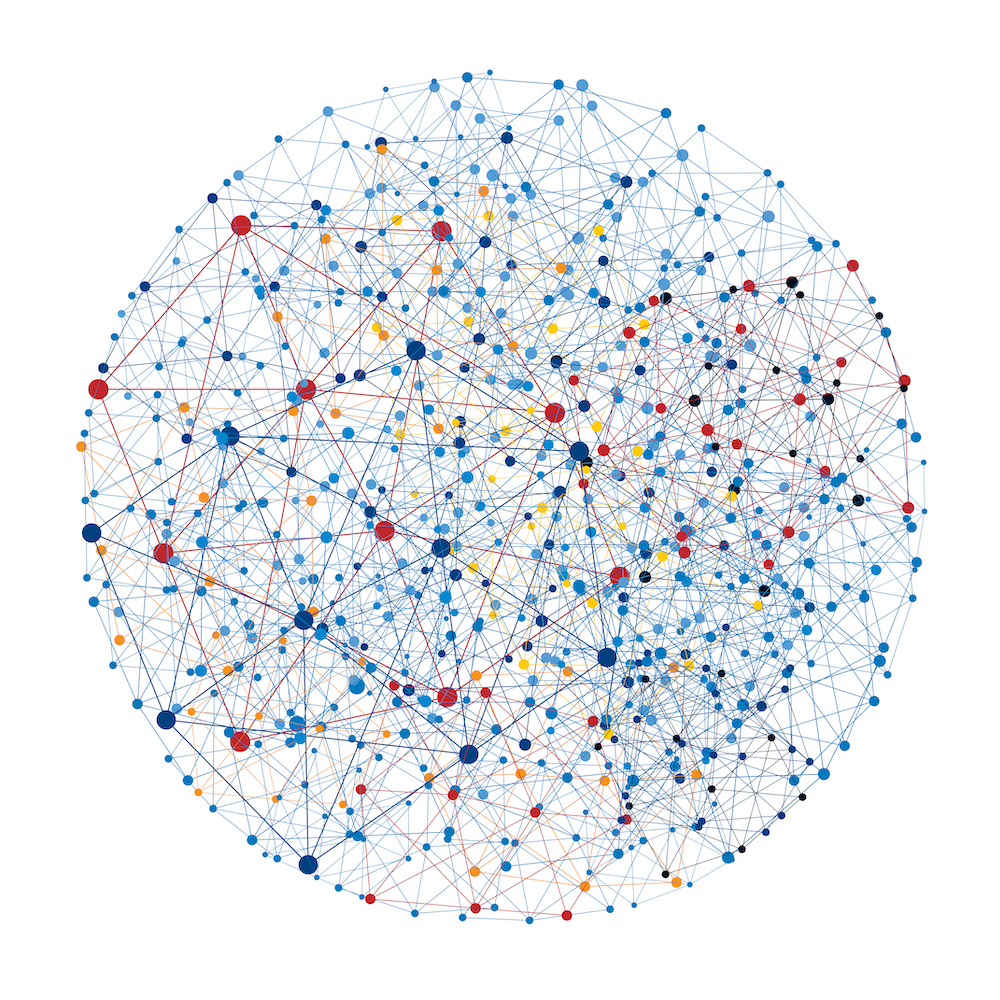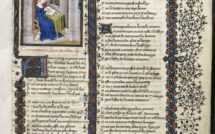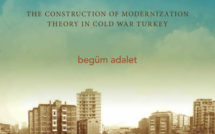

This is part of our special feature, Digitization of Politics and Memory in Eastern Europe.
Being obsessed with history and its interpretation is typical for all the countries in Central Europe. Since the nineteenth century, close links were established in this region between the historiography and the political developments of the nations, which led not only to “politization of history” but also to “historization of politics.”[1]
The process of the historization of politics, as the Czech historian Michal Kopecek describes, became an integral part of the online culture. Political events and conflicts are explained and commented on the basis of various national historical narratives; the pro and con argumentation follow in many cases the same pattern. Indeed, nowadays history and “historical” knowledge is accessible and available for everyone and in every possible form: from blogs to Facebook. Furthermore, every user can generate “historical” content, or, in other words, every user can write and rewrite history. The user becomes “..an empowered actor who has not only semiotic but also productive and creative power.”[2] This process has an effect on national historical narratives as well. Due to digitalization, these narratives have undergone a significant change. While prior to digitalization, national historical interpretations were mainly shaped by various experts’ groups, we can now observe the multiplication of authors, who are producing, interpreting, or rewriting national historical narratives. This process is participatory and every user claims expertise in various debates on certain historical events, such as WWII or the Trianon treaty in 1920. These debates and conflicts are in many cases very emotional and are linked a.) to the creation of “Otherness” and at the same time b.) to strengthening the own symbolical collective identity. This particular connection between (constructed) national-symbolical identity and national historical narratives is already well researched.[3]
However, as we argue here, a new quality of this interconnectedness is reached with digital communication, as it provides a.) access to a huge variety of forms of historic knowledge, b.) tools for the production and c.) offers visibility for the produced conflict-generating narratives and their dissemination on platforms (e.g. social media). Therefore, in this framework, this research project[4] focuses on the digital production, transformation and dissemination of historical narratives, used and re-used in “real-time” conflicts between Hungary and the Ukraine regarding the border region called Zakarpattia oblast.[5] The intermingling of minority rights issues (such as the language question[6]), geopolitics (region), and historical narratives serve as a basis for the production of conflict-generating, re-interpretations, and re-use of historic narratives between the two countries. Focusing on the digital communication of “real-time” conflicts, the research aims to understand the dynamics of influences and interdependences between real-time conflicts and their digital communication as well as the role of historic knowledge, or so-called “historic consciousness”[7] in generating the conflict-, analysing agents, forms and content.
What does the concept of historic consciousness describe or include? According to Andrew Glencross, “Historical consciousness is defined as the understanding of the temporality of historical experience or how past, present and future are thought to be connected.”[8] The Czech historian Zdeněk Beneš[9] goes somewhat further, emphasizing that historical consciousness denotes non-reflected or very poorly reflected sum of historical information.[10] Benes underlines that the most important form of historical thinking is historical consciousness, because it consists of a systematized whole of historical information, in which historical knowledge is applied together with various mythologized interpretations of the past. Or as he formulated: “Historical consciousness is the most prevalent form of historical thinking in a society.”[11] The question that arises then is what is the connection between conflicting digital communication and historical consciousness?
Users who are producing content, claim a sort of “expertise” regarding history and historical events, rooted in the individual historical consciousness. While historic knowledge production in the “analog era” was controlled and realized by experts (mainly historians), the authorship became multiple and participatory with digital communication tools. As a result, many users create content on the base of their “expertise” commenting real-time conflicts or events, or the historic narratives or beliefs of others. In these fierce debates on certain issues or events, carried out in various digital forums and platforms, everyone becomes participants/authors, everyone claims expertise and via the Internet (i.e., Wikipedia, etc.), the access to knowledge is for everyone a reality. Parallel to the multiplication of agents in the historical knowledge production, also conflict-generating contents are growing, and are disseminated in an uncontrollable speed. Consequently, this fragmentatioan of actors leads to that what is called “battle of narratives,”[12] and became the bedrock of international politics, with social media as the powerful tool to fight this battle. The unique characteristic of social media is that it empowers and enables individuals to engage in ways unseen before, as Jean-Marc Rikli and Anja Kaspersen pointed out in their article.[13]
All these processes could be observed regarding the political tensions between Hungary and the Ukraine and their conflicting digital communication. Analyzing four conflicts between Hungary and the Ukraine between 2017-2019 by tools of network visualization and text mining, we hope to be able to grasp the coordinates of these dynamics. For answering these shortly introduced overall research questions, the following case studies had been analyzed: [14]
a.) the Ukrainian Law of Education and its impact on the Hungarian minority in the Zakarpattia Oblast, (2017-2018)
b.) The firebombing of the Hungarian cultural institute in Beregovo, February 2018,
c.) the so called, CONIFA-Affair (Hungarian ethnic minority soccer groups) between Hungary and the Ukraine Summer 2018,
d.) and the double citizenship-conflict between Hungary and the Ukraine in autumn 2018.
Although, at first sight, the case studies had different concrete conflict subjects, they can be classified as various manifestation of the same, long lasting hybrid conflict of a mixture of ethnic minority rights and identity issues and historic national interpretations.
The fact that this border region belonged, prior to 1918, to the Austrian-Hungarian monarchy and, as such, was part of the Hungarian Kingdom, as well as the existence of a continuous Hungarian speaking ethnic minority, is a powerful element of the historic consciousness on the Hungarian “side.” As a result, these elements appear again and again as arguments or motifs in the communication and interpretation of the four cases. For example, in the less “historicized” case,[15] (the firebombing of the Hungarian Cultural Institute) people argued that the region does not belong to Ukraine at all (?)[16] Howver, the cases of the Language Bill and the double-citizenship affair between the two countries clearly touched upon sensitive issues, such as language and cultural autonomy, which are historically already contested; in the case of the football – affair, the conflict potential was somewhat hidden and less obvious. However, this affair demonstrated a new quality of digital conflict production.
The Confederation of Independent Football Associations (CONIFA) is the football federation for all associations outside FIFA. It’s a global organization supporting representatives of international football teams from nations, de-facto nations, regions, minority peoples, and sports isolated territories. It was founded on June 7, 2013 and organized its first World Football Cup in June 2014 in Ostersund, Sweden.[17] In 2018, the CONIFA Football World Cup was won by a team called “Karpatalya” (Kárpátalja), representing the Hungarian minority in Zakarpattia Oblast, in the Ukraine. As the Karpatalya team celebrated its win, the then Ukrainian sport minister, Igor Zhdanov, expressed his irritation and suspicion over the victory in a Facebook-post.[18] He accused the players of separatism and called on the Security Service of the Ukraine claiming:
to respond appropriately to such a frank act of sporting separatism. It is necessary to interrogate the players of the team, as well as to analyze in detail the activities of the deputy organizer of the “Carpathian” for the purpose of encroachment on the territorial integrity of Ukraine and ties with terrorist and separatist groups.[19]
After the accusations, which were widely discussed in Hungarian media, Hungarian nationals who were involved in the management of the Karpatalya football club, but also players with Hungarian citizenship were banned from entering Ukraine by Ukrainian Security Service (SBU).[20] Even though the players emphasized again and again that they were passionate football players and did not care about politics, the Facebook-post turned the game and victory into a national-political affair, overloaded with difficult issues of separatism threats for territorial integrity. Besides the emotional comments by the users (both Ukrainian and Hungarian) in some cases using historical references,[21] this affair demonstrates clearly how easily a Facebook post generates a “real-time” diplomatic conflict with political consequences.
Although the four case studies represented conflicts on various levels and significances, the digital communication changed the forms and radiance of the conflicts between Hungary and the Ukraine. Involving historic knowledges (or the fragments thereof) and producing and disseminating the various digital conflicting narratives changed the frames and impact of these type of political conflicts. It is no longer about a conflict of group identities, since multiplication of content production (the users) and widespread dissemination easily allows for a huge variety of narratives. The speed with which conflicting materials are disseminated and attract attention and importance makes these conflicts uncontrollable -as the CONIFA affair – the Facebook post of only one person clearly demonstrated.
A shift can be observed in the significance of the digital communication of real-time conflicts: while a decade ago comments and conflicting narratives had been part of the real time conflict, recently a comment itself can become a starting point for a real-time conflict causing political tensions. In this process, in this region, historic consciousness plays still a quite substantial role, as history serves with all national myths, symbols and narratives as the legitimation for the defense of national interests—be it actual or imaginary.
Eszter Gantner holds a Ph.D. in History from the Humboldt University of Berlin. She has studied Law, History and Political Sciences in Budapest, Jerusalem, and Berlin. Currently she is academic employee and project coordinator (LOEWE) at the Herder-Institute for Historical Research on East Central Europe in Marburg, Germany.
References
[1]Kopeček, Michal. Spory o „dědictví“ demokratické opozice ve střední Evropě, autenticita a dějinná paměť[Disputes over the “Legacy” of the Democratic Opposition in Central Europe, Authenticity and Historical Memory]. [online] Available at: http://www.cz.boell.org/downloads/kopecek.pdf.
[2] Katerina Diamantaki: Memory and History in the age of digital media. In: Charitos D., I. Theona, D. Dragona (eds). Hybrid City. University Research Institute of Applied Communication. Athens 2011. progress paper. p.3.
[3] Benedict Anderson: Imagined Communities: Reflections on the Origin and Spread of Nationalism. second edition, London: Verso 1991; Latawski, Paul (Ed.) : Contemporary Nationalism in East Central Europe, palgrave macmillan, 1995, Adam Hudek (ed.): Between Czechs and Hungarians: Constructing the Slovak National Identity from 19th Century to the Present, History Compass 9/4 (2011): 257–268; Mink, G., Neumayer, L. (Eds.) History, Memory and Politics in Central and Eastern Europe: Memory Games, Palgrave Macmillan 2013.
[4] LOEWE Research Cluster “Regions of Conflict in Eastern Europe”, A2 Politics of Remembrance and Media. http://www.konfliktregionen.de/team-1/researcher-plenary
[5] The oblast is also referred to as the Transcarpathian Oblast, Transcarpathia, Zakarpattia, an administrative oblast (province) located in southwestern Ukraine, coterminous with the historical region of Carpathian Ruthenia. Its administrative center is the city of Uzhhorod. Situated in the Carpathian Mountains of western Ukraine, Zakarpattia Oblast is the only Ukrainian administrative division which borders upon four countries: Poland, Slovakia, Hungary and Romania. The lands of Transcarpathia were part of the Kingdom of Hungary since 895. such, it formed part of Austria-Hungary until the latter’s demise at the end of World War I.
[6] Officially: 2017 law On Education. On September 25, 2017, a new law on education was signed by President Poroshenko (draft approved by Rada on September 5, 2017) which says that Ukrainian language is the language of education at all levels. New Europe commented on this as follows: “The latest row between Kiev and Budapest comes on the heels of a bitter dispute over a decision by Ukraine’s parliament – the Verkhovna Rada – to pass a legislative package on education that bars primary education to all students in any language but Ukrainian. The move has been widely condemned by the international community as needlessly provocative as it forces the historically bilingual population of 45 million people who use Russian and Ukrainian interchangeably as mother tongues to become monolingual. Furthermore, the large minorities of Hungarians, Jews, Poles, Tatars, Gypsies, Romanians, Caucasians, and Gagauz generally speak and receive some formal or informal education in their own national languages, all of which will be adversely affected by the new draconian language statutes”. “Hungary-Ukraine relations hit new low over troop deployment”. New Europe. 26 March 2018. https://www.neweurope.eu/article/hungary-ukraine-relations-hit-new-low-troop-deployment/ retrieved 01.08.2019
[7] Andrew Glencross: From ‘doing history’ to thinking historically: Historical consciousness across History and International Relations. International Relations, 2015, Vol. 29(4), 413–433.; Jörn Rüsen: Historical Consciousness: Narrative Structure, Moral Function, and Ontogenetic development. In: Peter Seixas (ed.): Theorizing Historical Counsciousness.Toronto 2004, 63-86.
[8] Andrew Glencross: From ‘doing history’ to thinking historically: Historical consciousness across History and International Relations. International Relations, 2015, Vol. 29(4), 413–433.; Jörn Rüsen: Historical Consciousness: Narrative Structure, Moral Function, and Ontogenetic development. In: Peter Seixas (ed.): Theorizing Historical Counsciousness.Toronto 2004, 63-86.
[9] See on Zdeněk Beneš and his concept´s reception: Tomas Sniegon: Vanished History: The Holocaust in Czech and Slovak Historical Culture. New York-London 2017, p.7-13.
[10] Tomas Sniegon: Vanished History: The Holocaust in Czech and Slovak Historical Culture. New York-London 2017, p.7-13.10.
[11] Tomas Sniegon: Vanished History: The Holocaust in Czech and Slovak Historical Culture. New York-London 2017, p.7-13.11.
[12]Jean-Marc Rikli , Anja Kaspersen: The Global War of Narratives and the Role of Social Media, 2016; accessed July 22,2019; https://www.weforum.org/agenda/2016/07/the-global-war-of-narratives-and-the-role-of-social-media/
[13]Jean-Marc Rikli, Anja Kaspersen: The Global War of Narratives and the Role of Social Media, 2016; accessed July 22,2019; https://www.weforum.org/agenda/2016/07/the-global-war-of-narratives-and-the-role-of-social-media/
[14]Data collection between September 2017-October 2018. All together 207 sources (in Ukrainian, Hungarian, Russian and English) had been collected.
[15]The attack was realized by two Polish citizens. However, there were rumors about Russia´s role behind the attack in order to disturb the Hungarian-Ukrainian and Polish relations. Furthermore, the German extreme right-wing party AfD has been involved in the case as well. More on the attack and its background: https://www.deutschlandfunkkultur.de/minderheiten-in-der-ukraine-wer-zuendelt-im karpatenvorland.2165.de.html?dram:article_id=415221; https://www.tagesspiegel.de/themen/reportage/anschlag-auf-ungarisches-kulturinstitut-in-der-ukraine-die-brandstifter-von-der-tankstelle/23836950.html; https://www.rbb-online.de/kontraste/archiv/kontraste-vom-31-01-2019/brandanschlag–ukraine-spur-fuehrt-in-bundestag.html; https://www.rferl.org/a/far-right-german-journalist-implicated-in-firebombing-of-hungarian-center-in-ukraine/29708843.html; https://www.theguardian.com/world/2019/jan/27/polish-far-right-trial-raises-spectre-of-false-flag-tactics-german-journalist-russia-ukraine-fire-court
[16]F.e. the user esvány wrote as a comment 2018-02-27 at 12:14 ”The Ukrainians have nothing to do with Kárpátalja”! https://pestisracok.hu/merenylet-karpataljai-magyarok-ellen-felgyujtottak-kmksz-kozponti-irodajat
[17] http://www.conifa.org/en/about-us/, retrieved on 24. 07. 2019
[18]https://www.facebook.com/photo.php?fbid=1665018386949689&set=a.162828537168689.32912.100003246322240&type=3&theater; retrieved on 24. 07. 2019
[19] http://www.conifa.org/en/2018/06/11/conifa-statement-regarding-karpatalya/, retrieved on 26. 07. 2019
[20] https://www.unian.info/society/10178579-ukraine-slaps-entry-ban-on-hungarian-footballers-of-zakarpattia-club-over-participation-in-tournament-of-unrecognized-states.html, retrieved on 26. 07. 2019
[21] http://www.csakfoci.hu/magyar-foci/rendkivuli-dontes-magyar-valogatott-jatekosokat-is-kitiltottak-ukrajna-teruleterol, retrieved on 26. 07. 2019
Photo: Digital abstract background | Shutterstock
Published on September 10, 2019.




